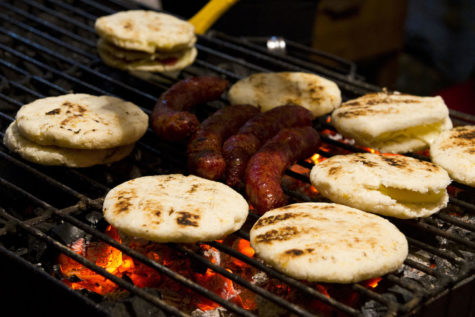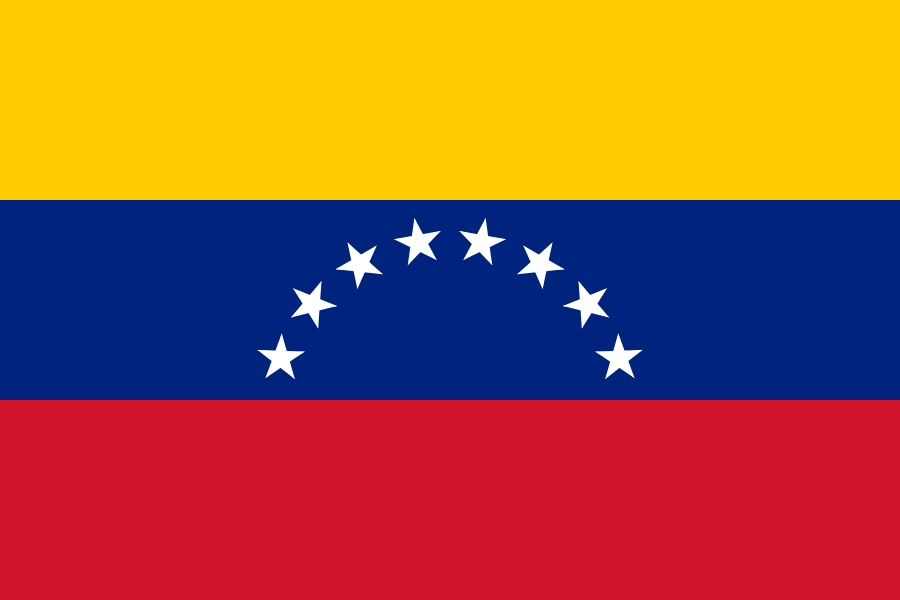El Pájaro Guarandol and Empanadas: Exploring Venezuela
From the stories traditional dances tell, to mouthwatering cheese and beef cuisine, a rich culture flows through Venezuela.
Pabellón criollo is sometimes considered an ode to the Venezuelan Flag.
October 15, 2021
El Pájaro Guarandol is pursued by El Cazador, its impeding death looming in a flash of dance and music as Venezuelan tradition dictates.
“I lived in Venezuela for 11 years of my life,” Mariana Miranda, a Junior, says. She grew up in Puerto Ordaz in Ciudad Guayana. “It was truly amazing. It was very hot, but not wet hot, dry hot which made it even better! The trees, animals, people are all amazing. You always felt home no matter where you went.”
Thinking of what she loves about Venezuela, Miranda first thinks of the foods and dances, stating “they are all important to me and mean a lot to me!”
When it comes to food her favorites range from arepas to pabellón criollo.

“Arepas are amazing – best thing ever,” Miranda says.
A pre-Columbian dish, arepas are made from a dough based in corn. With amazing versatility, arepas can be buttered, dipped in sauce, and filled with anything from queso (cheese) to carne mechada (shredded beef).
“My favorite thing to eat with arepas is avocado and eggs,” Miranda says. “It’s literally amazing!”
Pabellón criollo, meanwhile, is the national dish of Venezuela. Though it is often debated, the different colors of the dish are sometimes said to represent the different ethnic groups of the country or the colors of the national flag.
“The local version of the rice and beans combination is found throughout the Caribbean.” Miranda says. “It is a plate of rice, shredded beef and stewed black beans and it’s amazing.”
However, not to be forgotten is the empanada, another versatile dish with a variety of potential fillings to go within its breaded shell.
“Little fact here, I was out with my parents, and we found an empanadas place, Venezuelan empanadas,” Miranda explains her love for empanadas, “and I was so happy because the last time I ate them I was in Venezuela! So, I got my empanadas, cheese, of course, and beef. They were hot but I waited a little for them to cool off, and out of nowhere my mom grabs my cheese empanada and breaks it in half, to let all the hot air out. I started crying- that’s how important it is.”
There are also a lot of sweets from Venezuela that cannot be found in Texas.
Pirulines come to mind when Miranda thinks of this. “It’s a roll filled with chocolate and it’s really good!” she says.
“Here there are copies of them, but they are not the same thing,” Miranda says.
When it comes to traditions, one of Mariana’s favorites is El Pájaro Guarandol.
“As I grew up, I was in a dancing class in my old school it was one of the many traditions we took part in,” Mariana says. “El Pájaro Guarandol is represented mainly in the state of Anzoátegui, although it is common for it to be danced throughout the country.”
The central figure of the dance, El Pájaro Guarandol, is a bird adorned in bright colors, pink, yellows, and greens.
“In it several people dance and sing, but three main characters stand out, El Pájaro Guarandol, The Wizard and The Hunter.” Miranda elaborates, “The story that is interpreted is that of the Pájaro Guarandol, which is chased by a hunter. Although the hunter manages to kill him, the Witcher ends up resurrecting the animal.”
To travel to Venezuela is to be welcomed into a land rich in food and alive with tradition.
“Everyone is very welcoming!” Miranda emphasizes, “You don’t feel out of place, you are treated as if you are part of their family which is very nice.”













